French Drain Guide
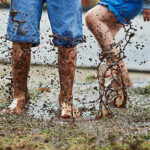
While the little ones may enjoy playing in a mud puddle, excess water on a property can be damaging.
A French Drain is a simple, yet effective, solution for managing excess surface water and groundwater around a home. If your customer is facing issues with water pooling, or soggy areas in their yard, installing a French Drain can help redirect water away from problem areas.
For a modern and efficient approach, a great option is using the NDS Flo-Well system. Keep reading for a step-by-step guide.
Materials Needed (all are available at Christensen's)
- NDS Flow-Well
- Flo-Well Drain Inlet
- 4" Tri Wall Pipe or 4" Perforated Pipe
- EZ Flow Mesh Pipe
- Gravel (clean, coarse)
- Landscape Fabric
- Pulaski Axe
- Shovel
- Trenching spade
- Level
- Tape measure
Planning Your Drainage System
Before you begin digging, plan the layout of your French Drain. Identify the areas where water accumulates and determine where you want to redirect it. The Flo-Well should be installed at the low point of your drainage system to collect and disperse water effectively.
Digging the Trench
Use a shovel and trenching spade to dig a trench for the French Drain. The trench should be about 6-12 inches wide, and deep enough to accommodate the pipe and a layer of gravel, typically around 18-24 inches deep. Make sure the trench slopes away from the home at a gentle slope (around 1% slope or 1" of fall for every 8' of pipe) to ensure proper water flow.
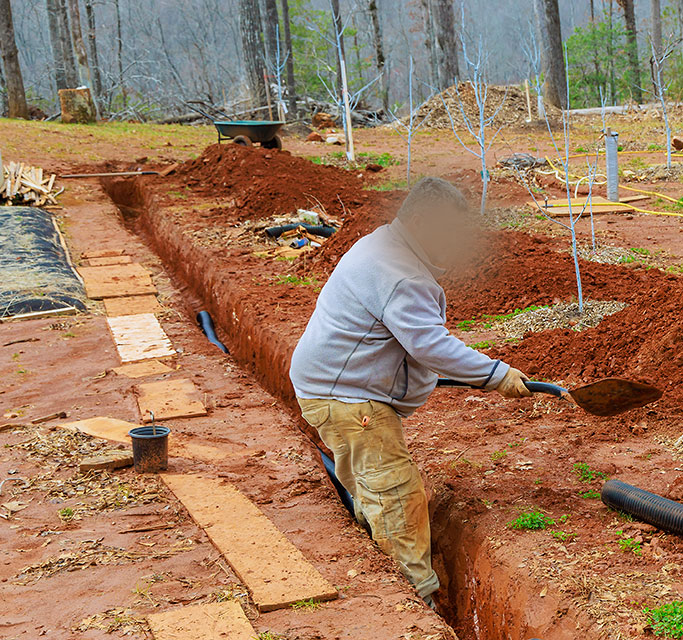
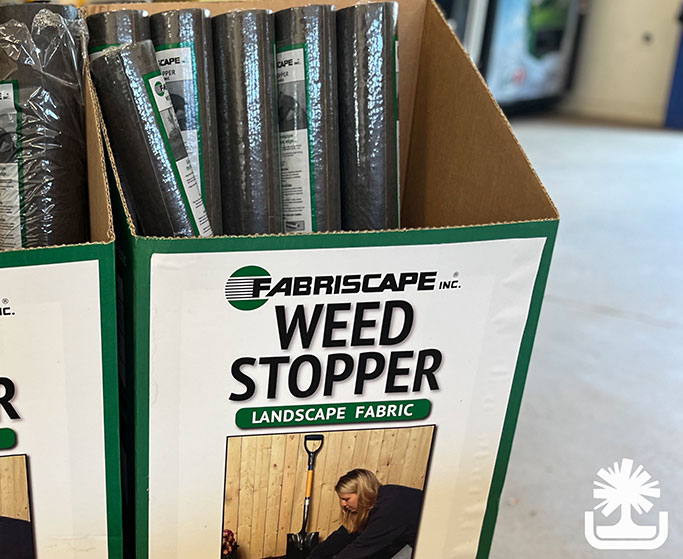
Laying Down Landscape Fabric
Place landscape fabric at the bottom of the trench. This fabric will prevent soil from mixing with the gravel and clogging the system, while allowing water to flow through. Extend the fabric up the sides of the trench so it can be folded over the gravel later.
Installing the Drain Pipe
Lay the drain pipe in the trench on top of the landscape fabric. If using perforated pipe, ensure the holes in the pipe are facing downward to collect water from the surrounding soil. Connect the sections of pipe as needed, and check that the pipe has a consistent slope.
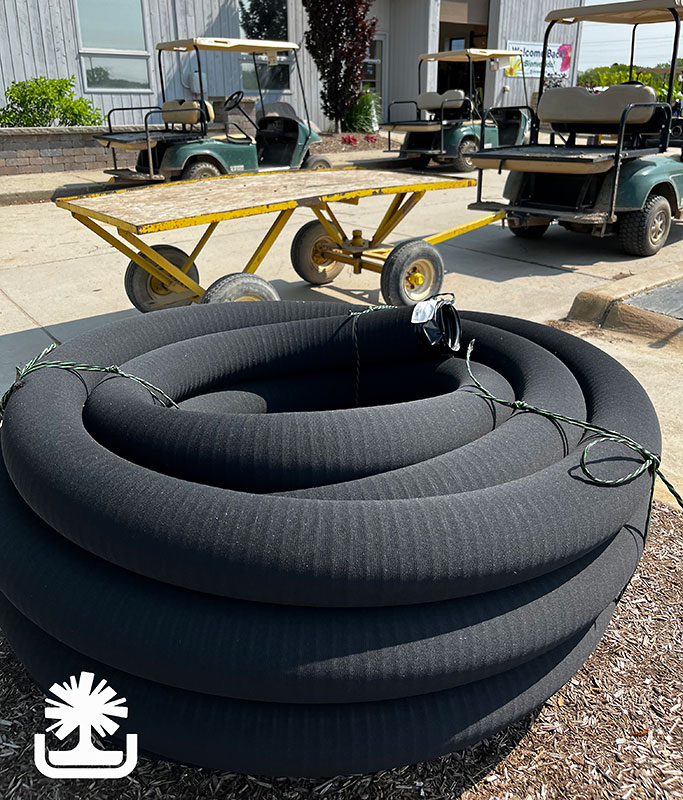
Adding Gravel
Cover the perforated pipe with gravel. Fill the trench with gravel up to about 2-4 inches from the surface. The gravel should be clean and coarse to facilitate good drainage. As you add gravel, gently compact it to ensure it settles evenly around the pipe.
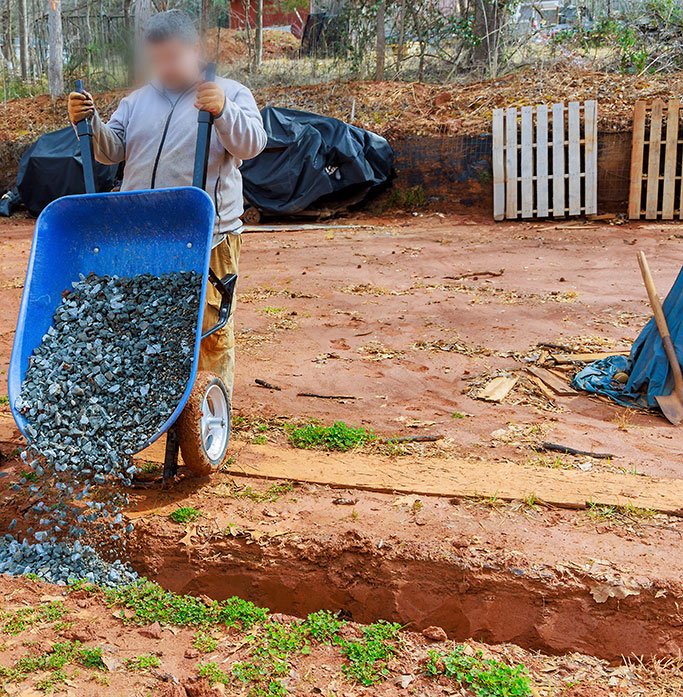
Placing the Flo-Well
At the end of the trench, where you want the water to disperse, place the NDS Flo-Well. The Flo-Well is a modular, underground stormwater management system designed to collect and infiltrate water efficiently. The Flo-Well has 3 sides: each side has 4 locations where the drain pipe can be connected. Position the Flo-Well accordingly to connect to the drain pipe, ensuring it is level and securely placed in the gravel-filled trench.
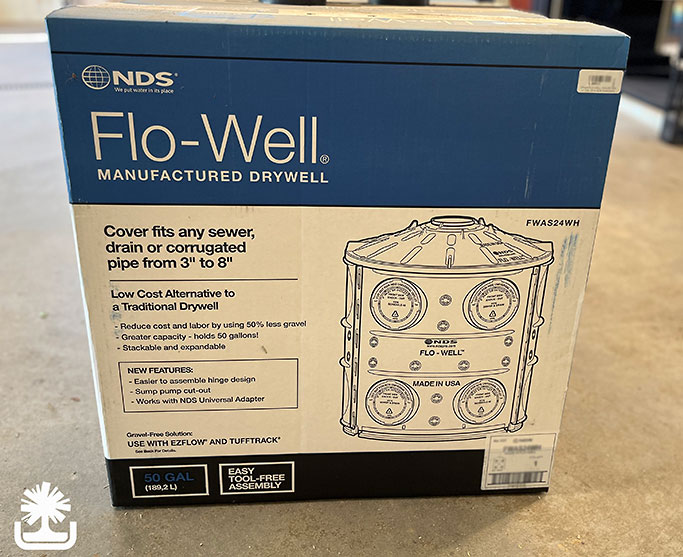
Installing the Optional Drain Inlet
At this point, you can install an optional surface Flo-Well Drain Inlet to the top of the Flo-Well. A surface Drain Inlet will help surface run-off to drain directly into the Flo-Well. It also provides a way to clean out debris that may get into the Flo-Well without having to dig it up.
To install the surface Drain Inlet, remove the center knockout on the Flo-Well lid and attach the Inlet. It's best to cover the grate of the Inlet with tape until installation is complete to prevent sand and soil from falling into the Flo-Well.
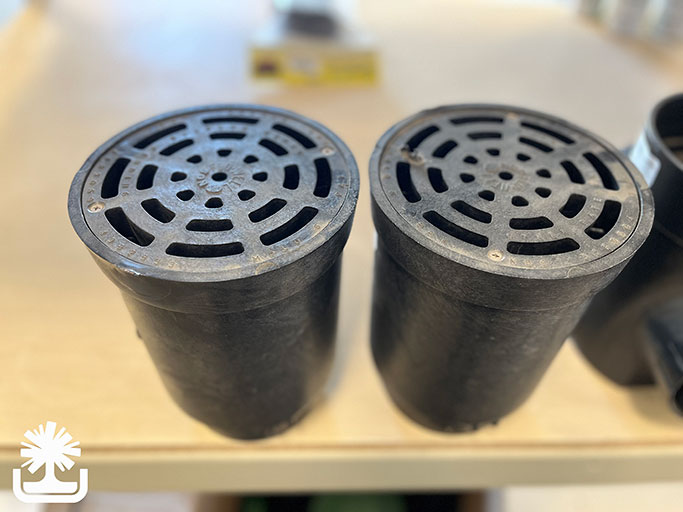
Wrap and Cover
Fold the landscape fabric over the top of the gravel. This will keep soil from entering the gravel and clogging the system. You can now back fill with EZ Flow Mesh Pipe. Finally, backfill and cover the remaining area with soil and grass or other landscaping material to blend the French Drain with the yard.
Test the System
After installation, test the system by running water through it to ensure it flows properly into the Flo-Well and that there are no areas where water pools or backs up.
By following these steps, you can effectively manage water runoff around your customer's property and prevent potential damage caused by excess moisture. The NDS Flo-Well system provides a durable and efficient system for managing stormwater, ensuring that the landscape remains healthy and dry.
